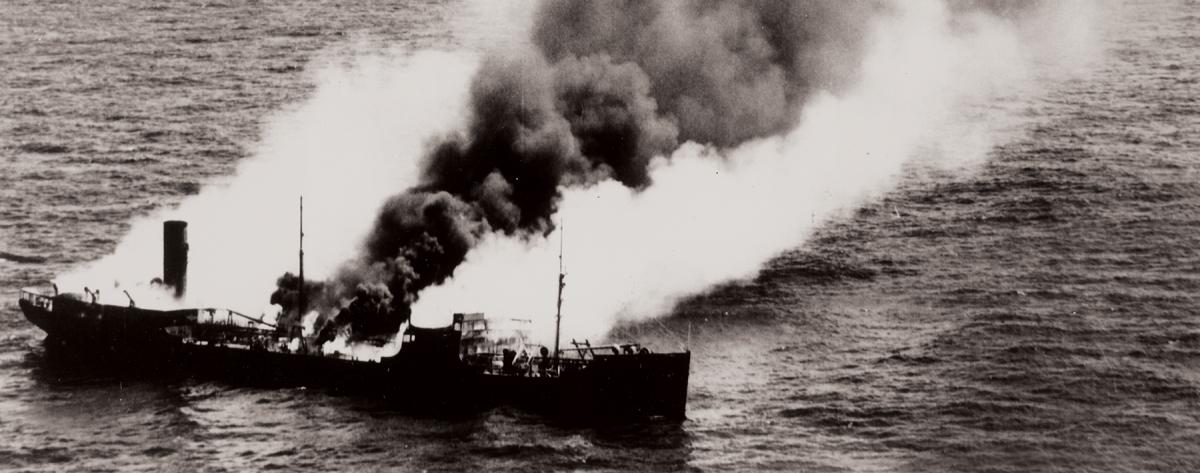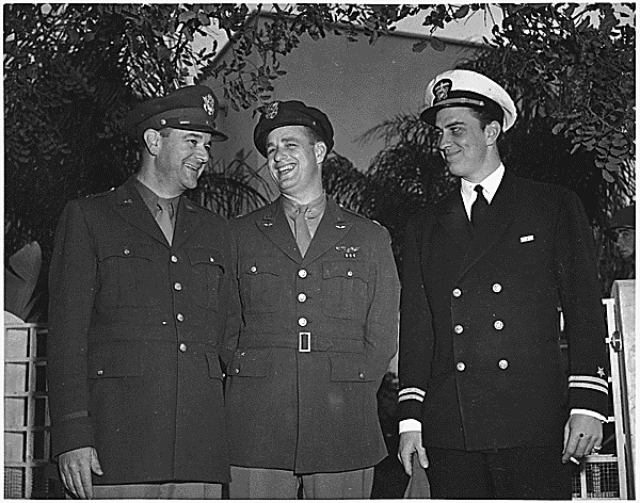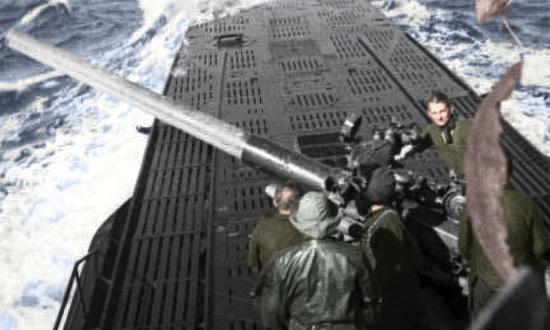It was a confrontation at sea that failed to occur—with one notable exception.
When two U.S. Navy task forces escorting a pair of troopship convoys left New York on Thursday, 15 January 1942, there were at least 16 German U-boats operating off the northeastern U.S. East Coast and Canada in the opening offensive against Allied shipping in American waters. Task Force 15, with an aircraft carrier, a battleship, three heavy cruisers and fourteen destroyers, surrounded three troopships for the northern run to Iceland and the British Isles, while Task Force 16, with a second troopship convoy bearing 10,000 troops, headed south toward the Caribbean and Panama Canal for the western Pacific.
Even though British codebreakers had warned the U.S. Navy that the U-boat offensive was imminent, American and British military commanders attending the ongoing Arcadia Conference in Washington, D.C., opted to dispatch the two troopship formations anyway. The move essentially stripped the U.S. East Coast of the last 18 combat-ready destroyers available for defense against the Germans.
Yet by chance, the two formations carried on their assigned missions as if the enemy were nowhere close. But one of the escorting destroyers came face-to-face with the carnage that was erupting offshore.
The Benham-class destroyer USS Mayrant (DD-402) left Norfolk for New York at 1012 on Wednesday, 15 January, as one of four escorts for the aircraft carrier USS Wasp (CV-7). The formation was assigned to Task Force 15, then gathering at the Navy’s Staten Island anchorage to escort Convoy AT-10 the following day. The carrier and her escorts had orders to join the formation south of Long Island.
The transit proceeded without incident until 1235 on the next day, when the Mayrant’s lookouts sighted the wreckage of a large oil tanker partially resting on the seabed some 27 miles south of the Hamptons. The officer of the deck (OOD) logged in the warship’s rescue operation:
1305: Changed course to 090 [degrees];
1307: Using various courses and speeds searching area to leeward of wreck searching for survivors;
1345: Sighted small boat and rafts with survivors;
1357: Maneuvered to lower whaleboat which picked up four men from raft;
1415: Four men brought aboard;
1425: Whaleboat put five rescued men aboard USS Rowan (DD-405) [another Wasp escort];
Twenty minutes later, the Mayrant changed course to 250 [degrees] and increased speed to rendezvous with Convoy AT-10. The OOD noted that the survivors had identified their ship as the British tanker Coimbra, which had been torpedoed twice 12 hours earlier as she headed from New York to Halifax.1
And at the end of the 1200–1600 watch, the OOD signed the logbook:
FRANKLIN D. ROOSEVELT JR., Lt. (jg), U.S.N.R.
1. Account of Mayrant and Coimbra survivors from Deck Log, USS Mayrant (DD-402), National Archives and Records Administration, RG 24, College Park MD.





